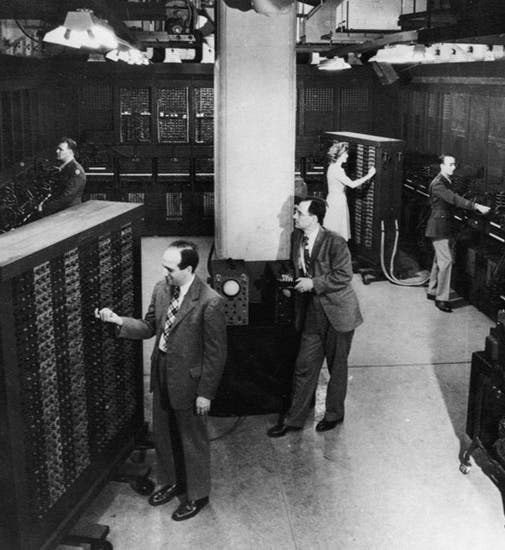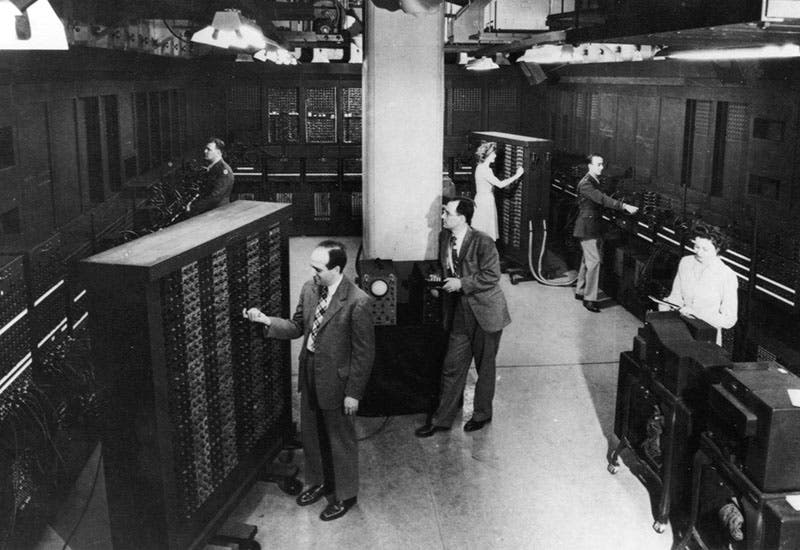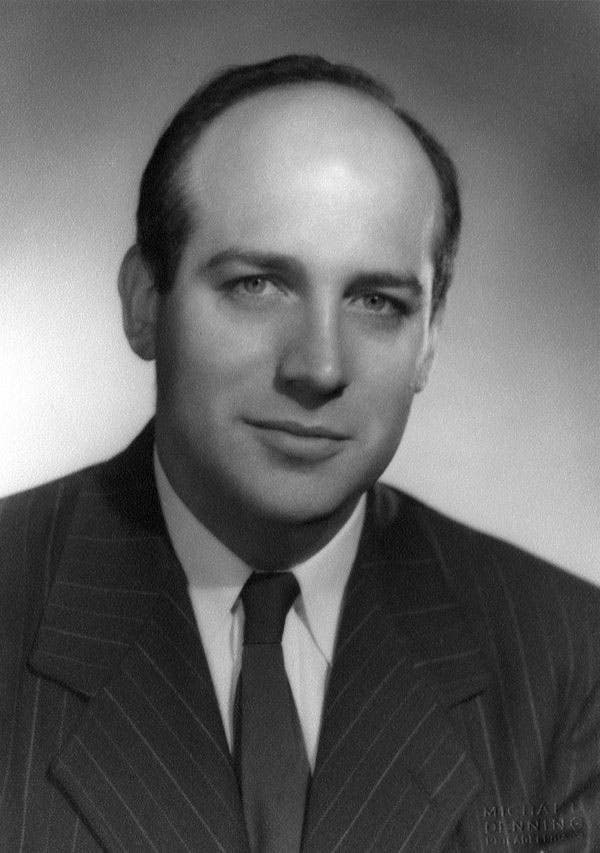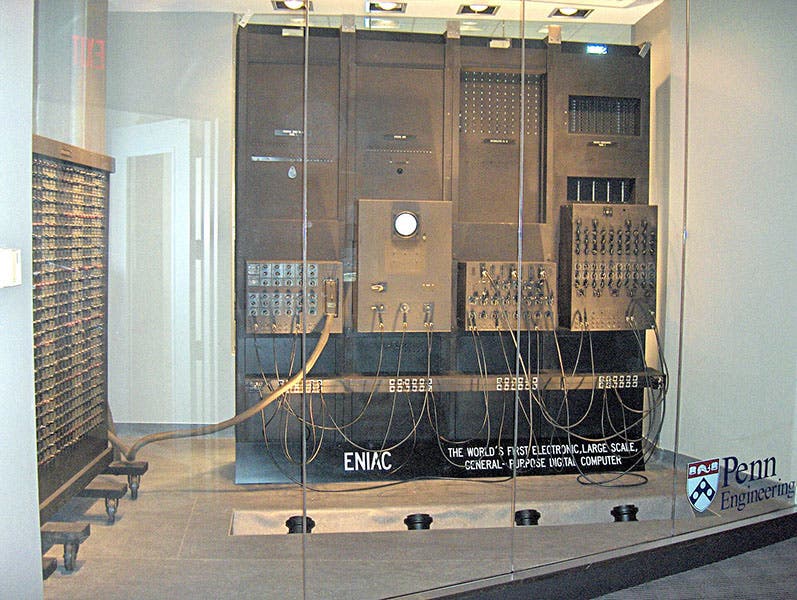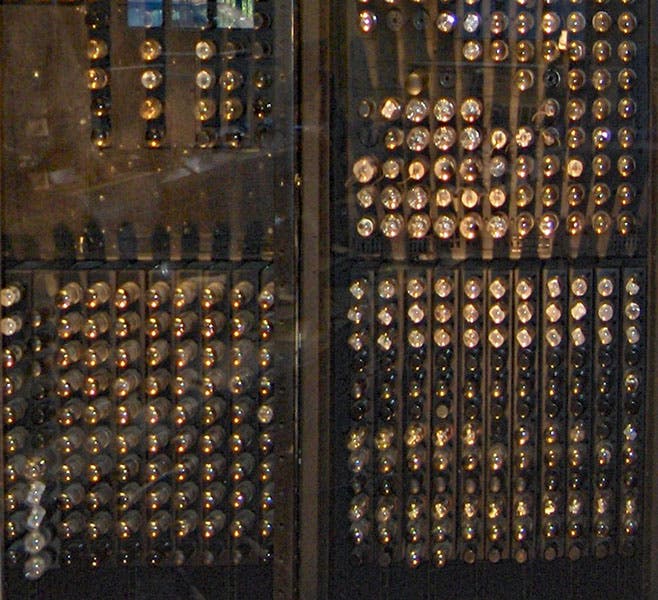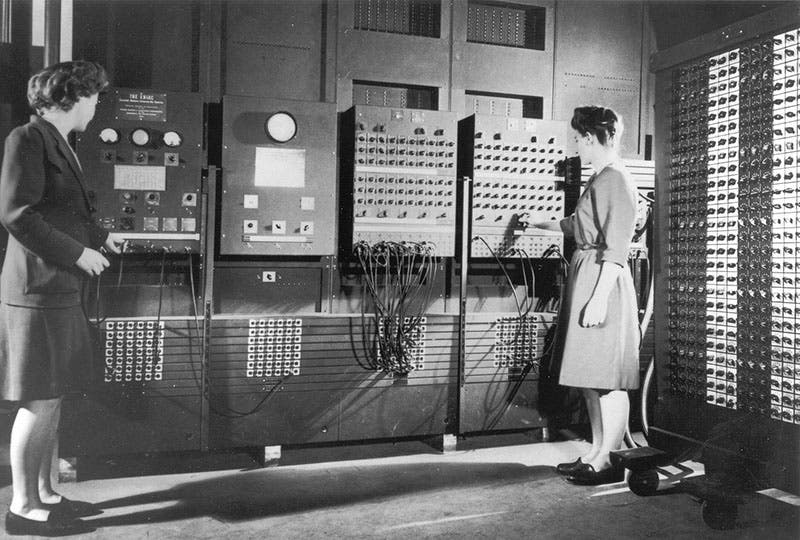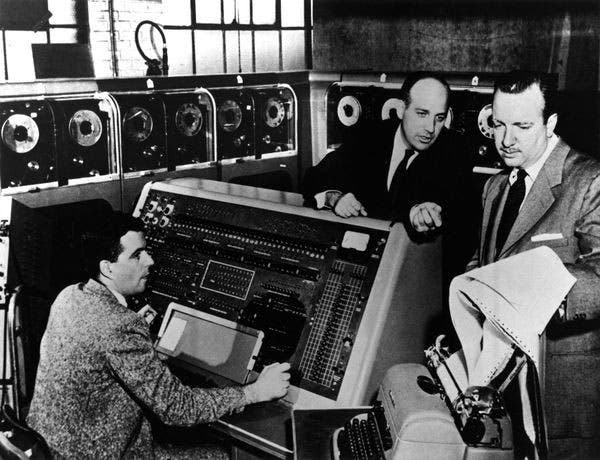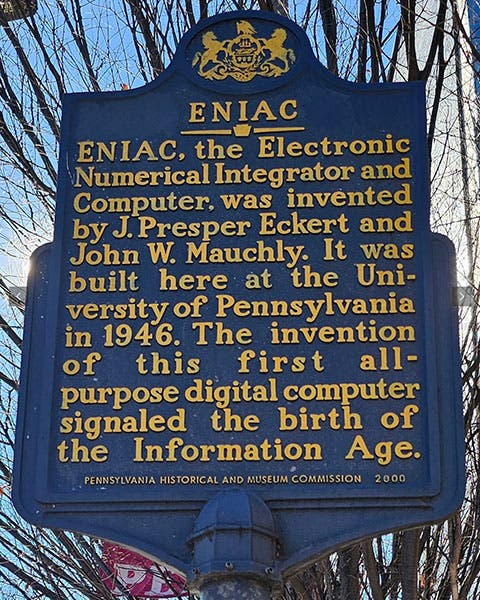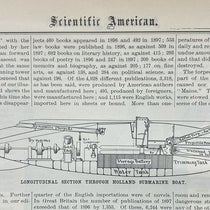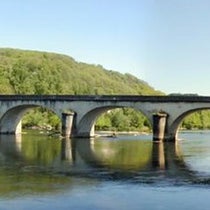Scientist of the Day - J. Presper Eckert
J. Presper Eckert, an American electrical engineer and computer expert, was born Apr. 9, 1919, in Philadelphia. Pres, as he was called, attended the prestigious William Penn Charter School and then the Moore School of Electrical Engineering at the University of Pennsylvania, where he worked in radar and taught electronics classes for the Army during the early years of World War II. One of his students was John Mauchly, a physicist at Ursinus College, and the two men became friends. Mauchly soon joined the staff of the Moore School.
It was Mauchly's idea to build an electronic calculating machine, a computer, using vacuum tubes as swiches, instead of relays or cams, which should make calculating much faster. This attracted the attention of the U.S. Army liaison at the Moore School. The Army desperately needed a faster way to provide ballistic tables for their new artillery, and so they gave Mauchly and Eckert the go-ahead. The project was called Electronic Numerical Integrator and Computer, or ENIAC. Eckert was appointed chief engineer.
ENIAC was a mammoth device, housed in a giant room at the Moore School (first image). It was the world's first programmable electronic computer, so the entire architecture had to be developed from scratch. It used nearly 18,000 vacuum tubes, arranged in tall metal banks and all hard-wired together. It had accumulators to store numbers (it could handle 20 10-digit numbers in its 20 accumulators), and function tables, as such units were called, to input data, and integrators to calculate, and memory units for storage. Eckert was a genius at finding ways to make it all work. There was no way yet to store programs, so those were fed in by a team of six specially trained women, who are often shown in photos of ENIAC (fifth image).
ENIAC was not finished in time to make a difference in the War, but it was completed and powered up and revealed to the public on Feb. 15, 1946. It was already obsolete, and a second-generation computer, EDVAC, with stored program capacity, was being built at Penn. But ENIAC did come to the attention of Edward Teller and John von Neumann, who used it to make calculations for a proposed Super bomb, the hydrogen bomb that would succeed the fission bombs developed at Los Alamos. ENIAC operated until 1955.
Both Eckert and Mauchly left the Moore School shortly after ENIAC was unveiled, as the university abruptly changed its policy and asserted that all patent rights for future work would belong to the university. The two men set up their own company and developed UNIVAC, the first commercially available computer, which was finished in 1950, just in time for the U.S. Census Bureau to put it to use (sixth image). By that time, Eckert and Mauchly had sold their company to Remington Rand, soon to become Sperry Rand, and eventually UNISYS.
Many sources credit John von Neumann with most of the major advances made in computer design after ENIAC. Indeed, the basic structure of modern computer systems is called the von Neumann architecture. Since there is nothing in von Neumann architecture that wasn't worked out by Eckert before von Neumann even entered the picture, this would appear to be a misnomer.
We have yet to write an essay on Mauchly, who had the idea for ENIAC in the first place. But we have written a post on Jean Jennings Bartik, one of the 6 women programmers, who, in her later interviews, always made the case for an Eckert computer architecture.
ENIAC was so durable that much of it still survives, distributed to museums around the country. There is a display at the Moore School (third and fourth images), and another at the Artillery Museum at Fort Sill in Oklahoma, and probably more. There is a historical marker on the Penn campus commemorating ENIAC, Eckert, and Mauchly (last image).
William B. Ashworth, Jr., Consultant for the History of Science, Linda Hall Library and Associate Professor emeritus, Department of History, University of Missouri-Kansas City. Comments or corrections are welcome; please direct to ashworthw@umkc.edu.

